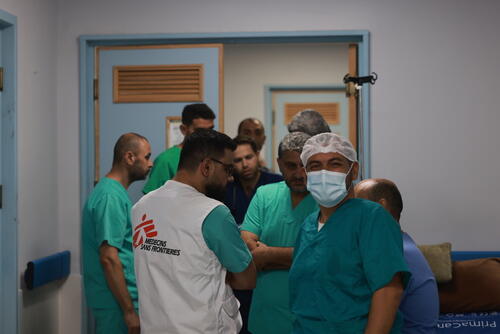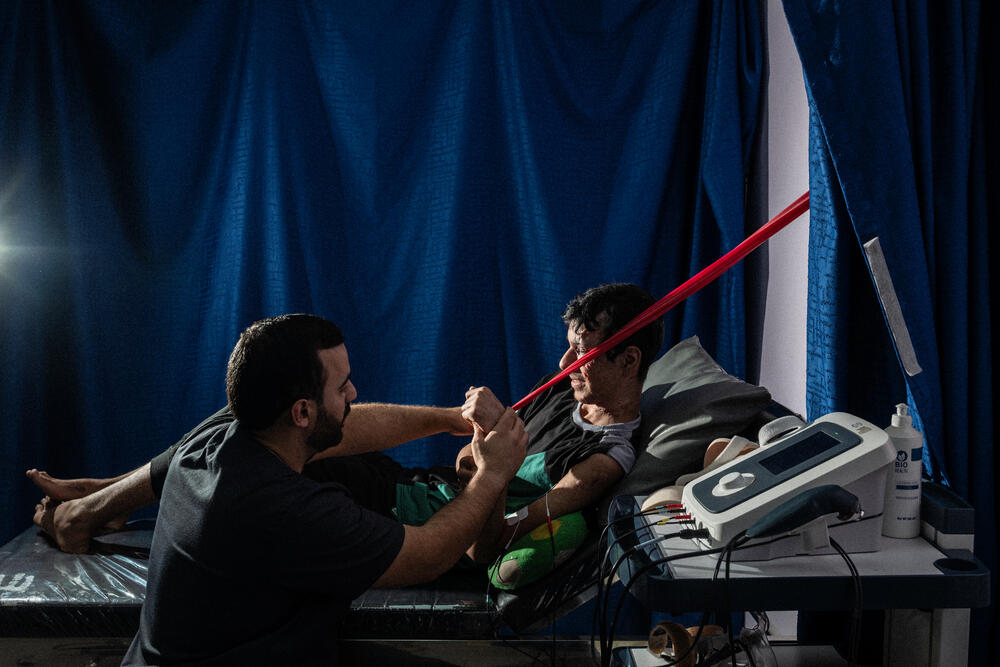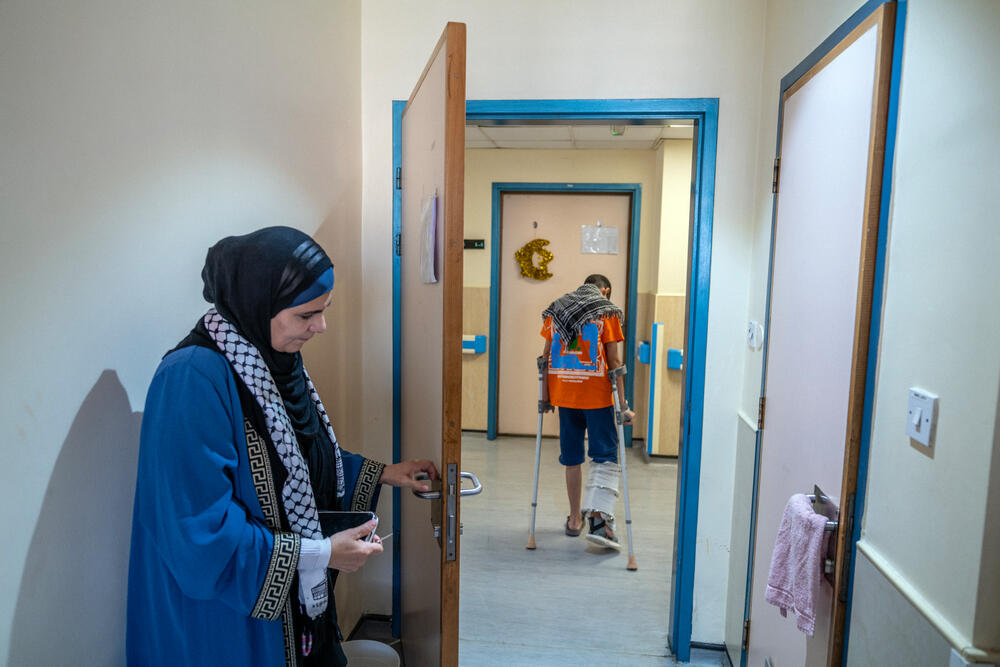Medical evacuation from Gaza: Thousands need care no longer available in the Strip
18 July 2025
Israeli authorities must facilitate the medical evacuation of all patients who require it—and without prejudice to their right to a safe, voluntary, and dignified return to Gaza.
The decimation of Gaza’s health system by Israeli forces over the last 22 months of all-out war has left Palestinians with scarce options to access care as needs continue to skyrocket.
An estimated 11,000–13,000 people—including more than 4,500 children—require medical evacuation to access care unavailable in the Strip. Yet Israeli authorities have allowed only a few of those requesting medical evacuation to do so, with many critical cases being delayed or denied regardless of medical urgency. The situation is particularly critical for patients in need of burn care or reconstructive surgery.
Doctors Without Borders/Médecins Sans Frontières (MSF) has only managed to medically evacuate 22 patients, including 13 children to our reconstructive surgery hospital in Amman, Jordan, for comprehensive rehabilitative care. We call on Israeli authorities to facilitate the medical evacuation of all patients who require it—and without prejudice to their right to a safe, voluntary, and dignified return to Gaza.
Dr. Hani Isleem, MSF’s project coordinator for medical evacuations in Gaza, describes the situation for these patients in the video below.
Donate to the Gaza Emergency Regional Fund
Help provide vital medical care to those who need it most.

“We are looking for countries—we really want them to open their doors to accept more and more cases because those patients are dying inside Gaza. The medical evacuation process is very complex and it is changing according to the [military] stages in Gaza. We can divide the phases into four:
Before the closure of the Rafah border on May 7, 2024, [evacuation] was directly from Gaza to Egypt and from Egypt to a third country. Then during the closure of the Rafah border, it was happening through the Kerem Shalom crossing point directly from Gaza to Israel, with two options: Either to EU countries or Jordan, and then transiting to other countries.
During the ceasefire, those stages changed again and [medical evacuations] went through the Rafah border. And after the collapse of the ceasefire, they again went through Kerem Shalom with very limited options. Severely injured cases, plus all the chronic cases—cancer plus other congenital and cardiovascular diseases—are in need of medical evacuation from Gaza.
You don't know what is the reason behind denying cases. Sometimes, when they approve a case, they refuse the companion. You are talking about separation of families, impacting people in need. And this has also impacted many countries that were very active and motivated to take cases out of Gaza, but were blocked because of [Israel’s] refusal. And then many countries gave up trying again to take cases from Gaza.
We are talking about an overwhelmed health system prioritizing cases: which [patient] really needs to go out and according to which conditions, which is also limited to the medical and administrative criteria of the [host] country.
The limited options and destinations is one of the most difficult [challenges]. A majority of countries are not open to taking cases from Gaza, and there are only a few countries that could take cases under conditions.
With all the restrictions I mentioned, MSF only managed to evacuate 22 patients to different destinations, including the United Arab Emirates, France, Canada, Qatar, and Australia. [Evacuating] those patients took a lot of coordination that started with the countries accepting the medical files and then starting the visa process, then coordinating with our colleagues from the WHO [World Health Organization] to get these patients out after getting COGAT [Coordination of Government Activities in the Territories] approval and letting them leave. This list originally included hundreds of patients and who were blocked with no response from the countries we were approaching.
We’re facing a lot of cases that were rejected by COGAT to leave the country. In addition to the list of patients MSF facilitated to evacuate from Gaza, we work with an MSF project in Amman, which is a reconstructive surgery program, and managed to refer 13 cases [there]—10 directly from Egypt and three directly from Gaza—to receive health care including reconstructive surgery.
We are calling on the Israeli authorities to allow patients to leave Gaza, and to be more flexible in the approval of cases. We are asking all countries to be on the side of the Gazan people by allowing more and more [patients] to have access to their health care systems, participating in the medical evacuations, and saving the lives of people.



